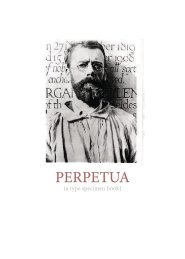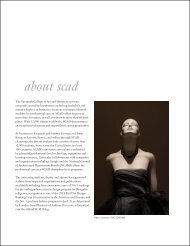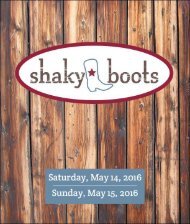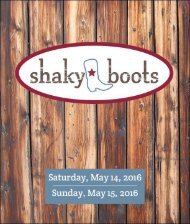Untitled-1
You also want an ePaper? Increase the reach of your titles
YUMPU automatically turns print PDFs into web optimized ePapers that Google loves.
ill cunningham takes manhattan<br />
Afew summers ago, on upper Fifth Avenue, Bill<br />
Cunningham spied a remarkable creature: a woman,<br />
in her seventies, with a corona of blue hair— not<br />
the muzzy pastel hue associated with bad dye jobs but the<br />
irradiant one of Slurpees and laundry detergent. The woman<br />
gave Cunningham an idea. Every day for a month, whenever<br />
he saw something cerulean (a batik shawl) or aqua (a Hawaiian-print<br />
sarong) or azure (a Japanese parasol) coming down<br />
the sidewalk, he snapped a picture of it. One morning, he<br />
spotted a worker balancing, on his shoulder, a stuffed blue<br />
marlin. “I thought, That’s it, kid!” he recently recalled. The<br />
following Sunday, “On the Street,” the street-fashion column<br />
that Cunningham has maintained in the Times for more than<br />
a decade, was populated entirely with New Yorkers dressed in<br />
various shades of the color—a parade of human paint chips.<br />
“Mediterranean shades of blue are not yet the new pink, but<br />
they are a favorite this summer,” he wrote. “The cooling<br />
watery tones, worn as an accent with white and browns,<br />
appear in turquoise-color jewelry and blue hair, but it is rare<br />
to see a man crossing the Avenue of the Americas with a<br />
trophy sailfish.”<br />
Cunningham’s job is not so different from a fisherman’s: it<br />
requires a keen knowledge, honed over years, of the local<br />
ecosystem and infinite patience in all manner of weather<br />
conditions. His first big catch was an accident. It was 1978,<br />
and a woman wearing a nutria coat had caught his eye. “I<br />
thought: ‘Look at the cut of that shoulder. It’s so beautiful,’<br />
“ he later wrote. “And it was a plain coat, too. You’d look at<br />
it and think: ‘Oh, are you crazy? It’s nothing.’ “ Cunningham<br />
shot frame after frame of the coat, eventually noticing that<br />
other people on the sidewalk were paying attention to its<br />
wearer. It was Greta Garbo. Cunningham showed the pictures,<br />
along with some shots of Cornelius Vanderbilt Whitney<br />
(whom he recognized), Farrah Fawcett (whom he didn’t, not<br />
owning<br />
“On the Street”—along with Cunningham’s society column,<br />
“Evening Hours”—is New York’s high-school yearbook, an<br />
exuberant, sometimes retroactively embarrassing chronicle of<br />
the way we looked. Class of 1992: velvet neck ribbons, leopard<br />
prints, black jeans, catsuits, knotted shirts, tote bags, berets<br />
(will they ever come back, after Monica?). Class of 2000: clamdiggers,<br />
beaded fringe, postcard prints, jean jackets, fish-net<br />
stockings, flower brooches (this was the height of “Sex and<br />
the City”). The column, in its way, is as much a portrait of<br />
New York at a given moment in time as any sociological tract<br />
or census—a snapshot of the city. On September 16, 2001,<br />
Cunningham ran a collage of signs (“OUR FINEST HOUR,”<br />
“WE ARE STRONGER NOW”) and flags (on bandannas, on<br />
buildings, on bikes) that makes one as sad and proud, looking<br />
at it now, as it did when it was published. So far this year, he<br />
has identified vogues for picture- frame collars, microminis,<br />
peg-legged pants, and the color gray (“often with a dash of<br />
sapphire or violet,” in the manner of the Edwardians). His<br />
columns are frequently playful —he once featured a woman,<br />
near the Plaza, walking three standard poodles, “an unmatched<br />
set in pink, turquoise, and white”—but they also convey an<br />
29










